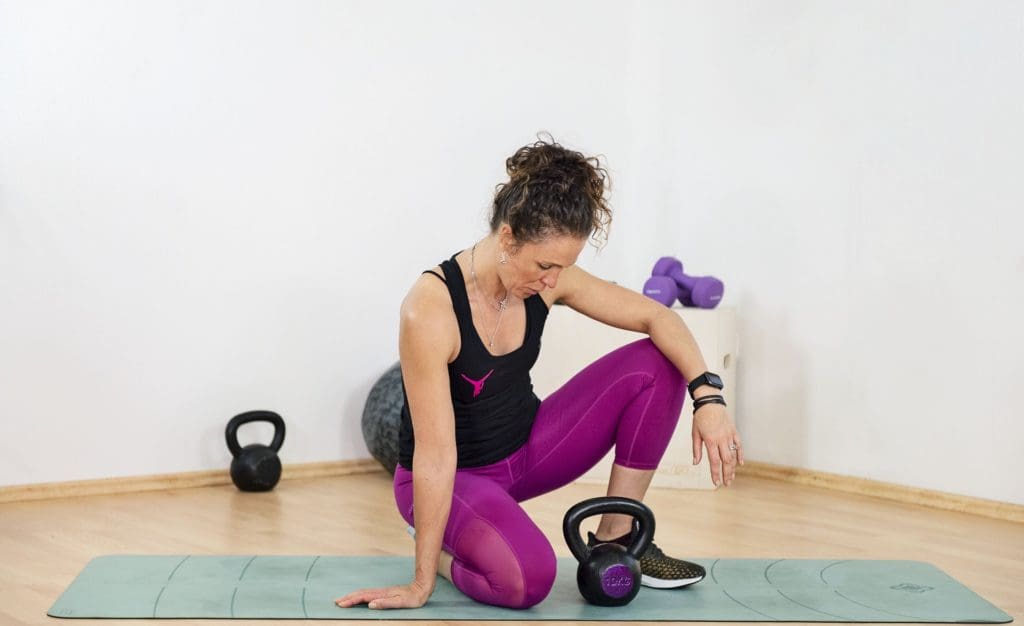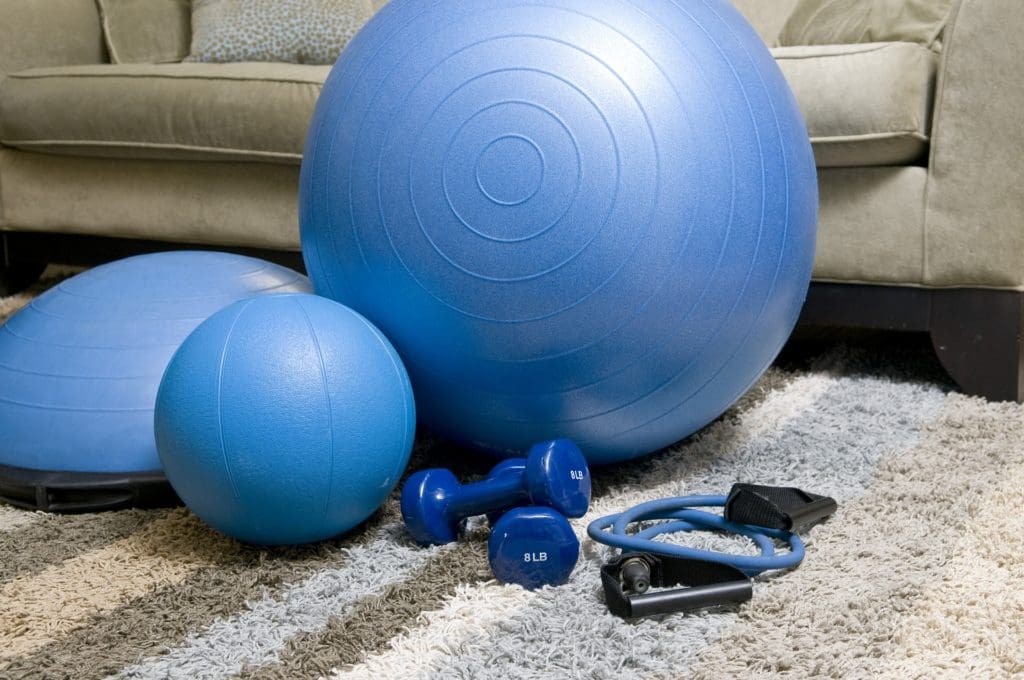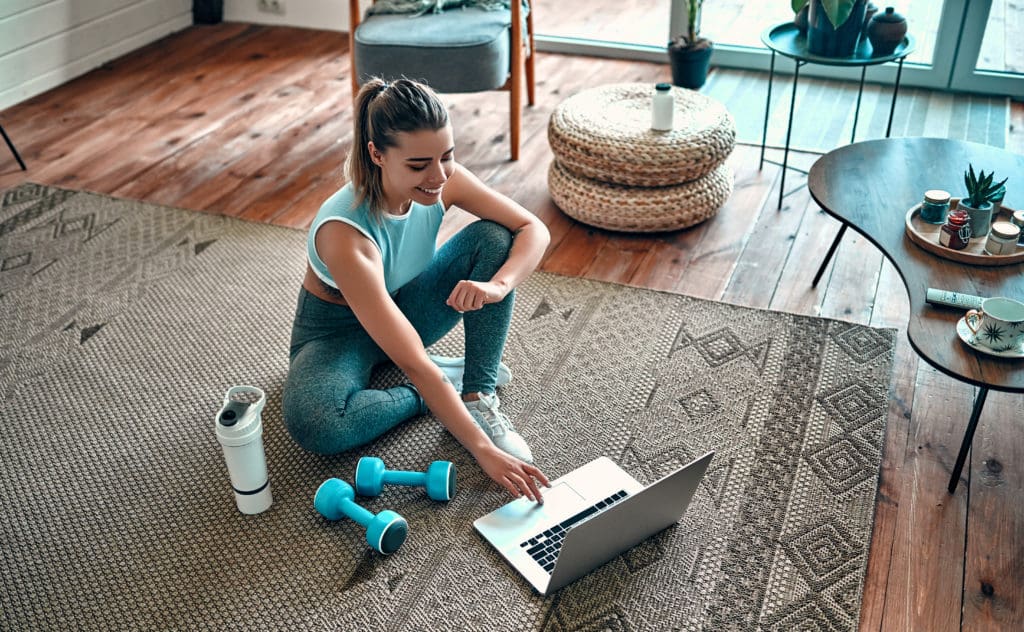PT Pro Tips: The 7 Most Common Mistakes You Might Be Making in Your Home Workouts

Earlier this year, our musculoskeletal experts shared the biggest mistakes people were making in their workouts at the gym, so we went back and asked some of the same physical therapists to share the biggest mistakes people make in their home workouts. Check out their suggestions below to help get the most out of your home workouts while preventing injuries and other problems.
1. “Go Hard or Go Home” doesn’t mean go SOFT at home
If you are accustomed to exercising at a gym, you may find it difficult to challenge yourself at home due to lack of equipment, weights, etc. While we want to exercise safely, many people tend to underperform their exercises while at home. Try progressing your routines through increasing volume (repetitions or sets), shortening rest periods, or changing the tempo of exercise. Keep in mind, it is wise to only change one of these variables at a time in order to see how your body responds.
On the flip side, you may be tempted to increase your intensity out of a feeling of “picking up slack” left over from having less equipment or training. Be careful not to jump into too many HIIT routines or other high intensity regimens in a given week – a sudden increase in intensity can wreak havoc on your muscles and joints and cause lasting damage.
2. Your location may not change, but your routine definitely should

Our bodies are amazing – they can adapt and grow when we challenge them. However, that means your body won’t find the same workout as challenging a few weeks into a specific routine. You can either increase the intensity through one of the methods above (increasing volume, shortening rest periods or changing tempo) or, even better, you can do different exercises! If you’ve been running every week, try and switch up one of those days to do a bike ride, a HIIT workout or bodyweight strength training. Changing up your routine ensures that you’re still challenging your body without getting bored.
3. Be the cheese, a.k.a. warm up and stretch!
Much like the cheese, your body is at its best when it’s warm and stretchy. It’s so important to warm up before your workout to get your blood flowing, your heart rate up and your muscles ready for action, and to stretch following a workout to ease your body out of its activated state, release tension in your muscles and let your heart rate decrease.
The most important thing about warming up and stretching is that both activities will help prevent injuries. Try warming up with dynamic stretches (stretches where you are moving, such as walking lunges and high knee marches) and cooling down with static stretches (stretches where you are holding a pose, such as reaching for your toes and tricep extensions). If you want to learn more about stretching, check out this article we shared about the importance of stretching and how it keeps Tom Brady playing at the same level as guys half his age.
4. Time off is not just for work
If you’re used to working out at the gym, you might feel compelled to overcompensate in your new routine by not taking rest days, but time off is crucial for recovery, and not resting could actually hinder muscle growth. You’re also putting yourself at risk for injury and burnout if you’re pushing your body every day of the week. It helps to plan out your weekly workouts, including rest days, to ensure your body has the time it needs to recover.
5. You can’t have action with distraction
One of the reasons so many people prefer to workout at the gym (besides access to equipment) is that it’s a singular commitment; it’s much easier to focus because it’s the only thing the gym is built for! Meanwhile, your home is built for any number of things that are decidedly less proactive (sleeping, lounging, snacking) and so it’s easy to get distracted. Though it may be really tempting to sit down on the couch during your rest period and turn on the TV, before you know it, you could be taking giant breaks between sets that decrease the workout’s efficiency and effectiveness. Find a place in your home where you can work out distraction–free, and maybe stay away from your smart phone for an hour while you’re at it!
6. Focus on form
Not only do gyms employ trainers who can correct your form, but there are mirrors everywhere so you can easily keep an eye on your technique and posture. Most people don’t have mirrors surrounding them when they workout at home, so it’s much more difficult to keep track of your form, which can quickly cause poor habits and injuries. Before starting a routine at home, make sure to do the research on the very best technique and form for each of the movements you’ll be doing, and be vigilant about focusing on your form throughout the workout. One quick lapse in attention can mean a long stint with a pulled muscle.
7. Find the fitness that fits

There are many free or subscription-based online programs run by fitness influencers or personal trainers, and many are great options for people who need the guidance but don’t have the money or time for a personal trainer or private class. The problem with these online resources is that they are meant for broad audiences with potentially wide gaps in fitness and ability levels. It’s easy to jump into a program that is too intense, or to feel like you have to do all the reps at the same speed the trainer is doing. Most programs provide modifications for people who need them, but make sure to do your research on different programs and find one that works for you.
